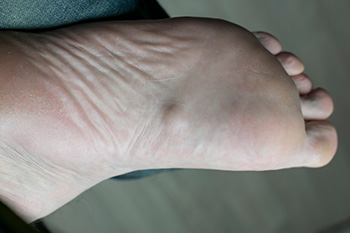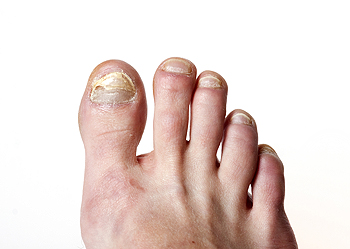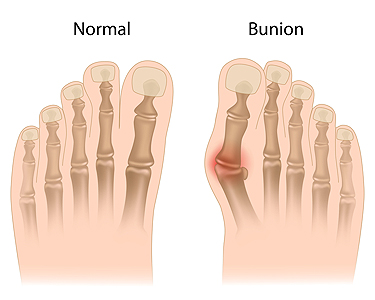Items filtered by date: July 2025
Simple Foot Exercises That Support Balance and Comfort

Strong, flexible feet are important for overall stability and daily comfort. Simple foot exercises can help improve balance, prevent injury, and ease discomfort caused by tight muscles or weak foot structures. Activities like toe curls, heel raises, and rolling a ball under the arch can strengthen muscles and improve circulation. Stretching the toes and calves can also help relieve tension that may contribute to common foot problems. Practicing balancing on one foot builds stability and can reduce the risk of falls, especially in older adults. Over time, these exercises support better posture and may ease pressure on the ankles, knees, and hips. Making foot exercises part of your routine can help maintain healthy movement and reduce discomfort. If you experience ongoing pain or have difficulty with balance, it is suggested you schedule a visit with a podiatrist for evaluation and guidance.
Exercising your feet regularly with the proper foot wear is a great way to prevent injuries and build strength. If you have any concerns about your feet, contact one of our podiatrists from Pima Foot and Ankle Surgery. Our doctors can provide the care you need to keep you pain-free and on your feet.
Exercise for Your Feet
Exercise for your feet can help you gain strength, mobility and flexibility in your feet. They say that strengthening your feet can be just as rewarding as strengthening another part of the body. Your feet are very important, and we often forget about them in our daily tasks. But it is because of our feet that are we able to get going and do what we need to. For those of us fortunate enough to not have any foot problems, it is an important gesture to take care of them to ensure good health in the long run.
Some foot health exercises can include ankle pumps, tip-toeing, toe rises, lifting off the floor doing reps and sets, and flexing the toes. It is best to speak with Our doctors to determine an appropriate regimen for your needs. Everyone’s needs and bodies are different, and the activities required to maintain strength in the feet vary from individual to individual.
Once you get into a routine of doing regular exercise, you may notice a difference in your feet and how strong they may become.
If you have any questions, please feel free to contact our offices located in . We offer the newest diagnostic and treatment technologies for all your foot care needs.
Definition of a Plantar Fibroma

A plantar fibroma is a benign, firm lump that forms in the arch of the foot within the plantar fascia, a thick band of tissue along the sole. This condition is part of a broader disorder called plantar fibromatosis, where fibrous nodules develop and may grow slowly over time. Causes are not always clear but may include trauma, genetic factors, or connective tissue disorders. Symptoms can involve pain, tenderness, or discomfort while walking or standing. Risk factors include middle age, family history, and certain medical conditions. A podiatrist can evaluate the growth, provide noninvasive treatment, and manage symptoms effectively. If you notice a lump in your foot arch, it is suggested that you consult a podiatrist for early diagnosis and care.
A plantar fibroma may disrupt your daily activities. If you have any concerns, contact one of our podiatrists of Pima Foot and Ankle Surgery. Our doctors can provide the care you need to keep you pain-free and on your feet.
Plantar Fibroma
A plantar fibroma is a fibrous knot in the arch of the foot. It is embedded in the plantar fascia which is a band of tissue that extends from the heel to the toes along the bottom of the foot. There can be multiple plantar fibromas in the feet at the same time. There are no known causes for this condition. If you have a plantar fibroma, there will be a bump in the arch of your foot that cannot be missed. Any associated pain is most often due to a shoe rubbing against the nodule. Non-surgical options, such as steroid injections, physical therapy, and orthotics should be tried first. Surgery is a last resort and is the only thing that will remove a plantar fibroma entirely. Consult with a podiatrist for a proper diagnosis and to determine the treatment regimen that is right for you.
What Causes a Plantar Fibroma?
While there are no specific causes identified, a plantar fibroma can possibly come from genetic predisposition or the formation of scar tissue that forms from healing the tears in the plantar fascia.
What Are the Symptoms of a Plantar Fibroma?
There will be a noticeable lump in the arch of the foot that may or may not cause pain. If pain is felt, it is typically because a shoe is rubbing up against the lump or when walking or standing barefoot.
Treatment and Prevention
A plantar fibroma will not disappear without treatment, but it can get smaller and be a non-issue. If pain persists, a podiatrist examines the foot and when the arch of the foot is pressed, pain can be felt down to the toes. An MRI or biopsy might be performed to help diagnose or evaluate the plantar fibroma. The following non-surgical options are generally enough to reduce the size and pain of these nodules:
- Steroid injections
- Orthotics
- Physical therapy to help apply anti-inflammatory creams on the bump
Surgery is considered if the mass increases in size and the patient continues to feel pain after non-surgical methods are tried.
If you have any questions, please feel free to contact our offices located in . We offer the newest diagnostic and treatment technologies for all your foot care needs.
Gout Pain Can Be Managed
Understanding Fungal Infections of the Toenail

A fungal toenail infection can begin as a small white or yellow spot and slowly spread deeper into the nail. Over time, the nail may become thick, brittle, discolored, or start to lift from the nail bed. These infections often develop in warm, damp environments and are more common in people who wear tight shoes, walk barefoot in public places, or have a history of athlete’s foot. Poor circulation or a weakened immune system may also increase risk. While the condition is usually not painful early on, it can lead to discomfort or difficulty trimming the nail, if left untreated. More persistent infections often require prescription treatment or professional care. If your toenails are showing signs of thickening, crumbling, or discoloration, it is suggested that you see a podiatrist for proper diagnosis and appropriate treatment.
For more information about treatment, contact one of our podiatrists of Pima Foot and Ankle Surgery. Our doctors can provide the care you need to keep you pain-free and on your feet.
Toenail Fungus Treatment
Toenail fungus is a condition that affects many people and can be especially hard to get rid of. Fortunately, there are several methods to go about treating and avoiding it.
Antifungals & Deterrence
Oral antifungal medicine has been shown to be effective in many cases. It is important to consult with a podiatrist to determine the proper regiment for you, or potentially explore other options.
Applying foot powder on the feet and shoes helps keep the feet free of moisture and sweat.
Sandals or open toed shoes – Wearing these will allow air movement and help keep feet dry. They also expose your feet to light, which fungus cannot tolerate. Socks with moisture wicking material also help as well.
If you have any questions please contact our offices located in . We offer the newest diagnostic and treatment technologies for all your foot and ankle needs.
Understanding Bunions and Their Risk Factors

A bunion is a bony bump that forms at the base of the big toe, caused when the tip of the toe lean toward the others. This misalignment is often the result of inherited foot structure, improper footwear, or conditions like arthritis. Risk factors include family history, flat feet, and wearing tight or pointed shoes. Prevention includes wearing shoes with wide a toe box, using supportive shoe inserts, and avoiding high heels. A podiatrist can assess foot structure, recommend custom orthotics, and provide treatment to relieve pain or suggest surgical correction, when necessary. If you are experiencing discomfort near your big toe or notice a visible bump, it is suggested that you schedule an appointment with a podiatrist who can offer relief and treatment tips.
If you are suffering from bunion pain, contact one of our podiatrists of Pima Foot and Ankle Surgery. Our doctors can provide the care you need to keep you pain-free and on your feet.
What Is a Bunion?
Bunions are painful bony bumps that usually develop on the inside of the foot at the joint of the big toe. As the deformity increases over time, it may become painful to walk and wear shoes. Women are more likely to exacerbate existing bunions since they often wear tight, narrow shoes that shift their toes together. Bunion pain can be relieved by wearing wider shoes with enough room for the toes.
Causes
- Genetics – some people inherit feet that are more prone to bunion development
- Inflammatory Conditions - rheumatoid arthritis and polio may cause bunion development
Symptoms
- Redness and inflammation
- Pain and tenderness
- Callus or corns on the bump
- Restricted motion in the big toe
In order to diagnose your bunion, your podiatrist may ask about your medical history, symptoms, and general health. Your doctor might also order an x-ray to take a closer look at your feet. Nonsurgical treatment options include orthotics, padding, icing, changes in footwear, and medication. If nonsurgical treatments don’t alleviate your bunion pain, surgery may be necessary.
If you have any questions, please feel free to contact our offices located in . We offer the newest diagnostic and treatment technologies for all your foot care needs.
Recognizing Rheumatoid Arthritis in the Feet

Rheumatoid arthritis in the feet is an autoimmune condition where the immune system attacks the joints, leading to inflammation, pain, and stiffness. It often begins in the small joints of the toes and feet, causing swelling, redness, and difficulty walking. Over time, it may lead to joint deformities and loss of function. The exact cause is unknown, but genetics and environmental triggers may play a role. Risk factors include family history, smoking, and age. A podiatrist can help by evaluating joint function, reducing pain through custom orthotics, and recommending strategies to maintain mobility. If you notice persistent foot pain or swelling, it is strongly suggested that you consult a podiatrist who can offer effective relief and management strategies.
Because RA affects more than just your joints, including the joints in your feet and ankles, it is important to seek early diagnosis from your podiatrist if you feel like the pain in your feet might be caused by RA. For more information, contact one of our podiatrists of Pima Foot and Ankle Surgery. Our doctors will assist you with all of your podiatric concerns.
What Is Rheumatoid Arthritis?
Rheumatoid Arthritis (RA) is an autoimmune disorder in which the body’s own immune system attacks the membranes surrounding the joints. Inflammation of the lining and eventually the destruction of the joint’s cartilage and bone occur, causing severe pain and immobility.
Rheumatoid Arthritis of the Feet
Although RA usually attacks multiple bones and joints throughout the entire body, almost 90 percent of cases result in pain in the foot or ankle area.
Symptoms
- Swelling and pain in the feet
- Stiffness in the feet
- Pain on the ball or sole of feet
- Joint shift and deformation
Diagnosis
Quick diagnosis of RA in the feet is important so that the podiatrist can treat the area effectively. Your doctor will ask you about your medical history, occupation, and lifestyle to determine the origin of the condition. Rheumatoid Factor tests help to determine if someone is affected by the disease.
If you have any questions, please feel free to contact our offices located in . We offer the newest diagnostic and treatment technologies for all your foot care needs.

